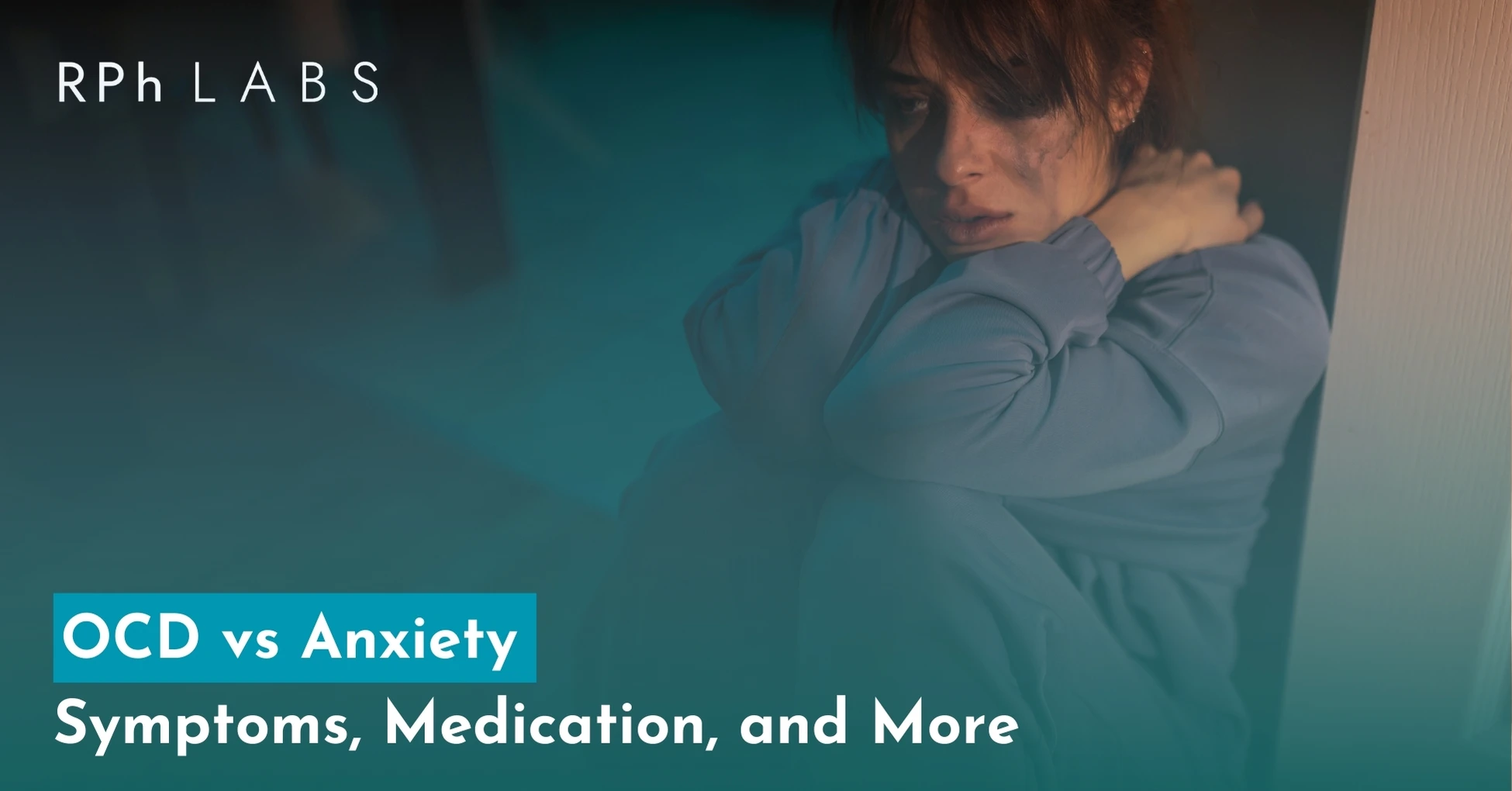
OCD vs Anxiety: Symptoms, Medication, and More
Obsessive-Compulsive Disorder (OCD) and anxiety disorders are two of the most common mental health conditions in the United States. Although they share some similarities, they differ significantly in symptoms, causes, and treatment approaches. Anxiety disorders involve excessive worry, fear, or nervousness that interfere with daily life.
Common types of anxiety disorders include Panic Disorder, Generalized Anxiety Disorder (GAD), Social Anxiety Disorder, and specific phobias. These conditions are often marked by physical symptoms such as an increased heart rate, sweating, dizziness, and persistent fear about everyday situations.
OCD, on the other hand, is characterised by unwanted, intrusive thoughts (obsessions) and repetitive behaviours (compulsions) performed to reduce anxiety. While OCD obsessions are typically irrational and not based on real events, they can sometimes be influenced by a person’s past experiences or learned behaviours. People with OCD often feel compelled to perform certain actions to prevent perceived negative outcomes, even though these actions are not logically connected to reality.
Accurate diagnosis is crucial for developing an effective treatment plan that addresses the specific needs of each individual.
OCD vs Anxiety
| Feature | OCD | Anxiety Disorders |
| Core Issue | Intrusive thoughts and compulsive behaviours | Excessive fear or worry about real or perceived threats |
| Thought Patterns | Recurrent, unwanted obsessions | Persistent anxiety about various aspects of life |
| Behavioral Response | Ritualistic behaviours or mental acts to reduce anxiety | Avoidance of feared situations or physical symptoms of anxiety |
| Duration of Symptoms | Chronic, often lifelong, without treatment | Can be episodic or chronic; it varies by individual |
| Response to Triggers | Specific triggers lead to compulsions | Generalized anxiety or specific phobias |
Important: Pharmacogenomic testing helps doctors administer tailored medication, especially in cases of problematic mental conditions; this helps avoid trial and error and perhaps optimise the treatments. Here is how simple PGx tests work.
Symptoms of OCD
- Obsessions: Recurrent, intrusive thoughts, urges, or images that cause distress.
- Compulsive Behaviours: Repetitive actions or mental routines done to alleviate the stress caused by intrusive thoughts.
- Behavioural Examples:
– Checking locks or appliances repeatedly.
– Washing hands excessively.
– Arranging items in a specific order.
Symptoms of Anxiety Disorders
- Generalised Anxiety Disorder (GAD): Chronic, overwhelming anxiety concerning various areas of life.
- Panic Disorder: Recurrent, unexpected panic attacks with physical symptoms like heart palpitations and dizziness.
- Social Anxiety Disorder: Strong fear of social interactions and being negatively evaluated by others.
- Specific Phobias: Extreme fear of particular objects or situations.
- Behavioural Examples:
– Avoidance of social interactions or specific places.
– Restlessness or feeling on edge.
– Physical symptoms like muscle tension or sleep disturbances.
Medication for OCD
The primary medications used to treat OCD include:
- Selective Serotonin Reuptake Inhibitors (SSRIs): Medications like fluoxetine (Prozac), fluvoxamine (Luvox), and sertraline (Zoloft).
- Selective Serotonin-Norepinephrine Reuptake Inhibitors (SNRIs): Like venlafaxine (Effexor XR).
- Antipsychotic Medications: In some cases, atypical antipsychotics like aripiprazole (Abilify) are used adjunctively.
These medications aim to balance neurotransmitters in the brain, reducing the intensity of obsessions and compulsions.
Medication for Anxiety Disorders
- Selective Serotonin Reuptake Inhibitors (SSRIs): Commonly prescribed SSRIs include sertraline (Zoloft), escitalopram (Lexapro), and paroxetine (Paxil).
- Serotonin-Norepinephrine Reuptake Inhibitors (SNRIs): Medications such as venlafaxine (Effexor XR) and duloxetine (Cymbalta).
- Benzodiazepines: Medications like lorazepam (Ativan) and alprazolam (Xanax) may be prescribed for short-term relief of acute anxiety symptoms.
- Beta-Blockers: Propranolol (Inderal) can help manage physical symptoms of anxiety, like rapid heartbeat.
Can Someone Experience OCD and Anxiety Together?
Yes, it is possible to suffer from OCD and Anxiety together. This co-occurrence can complicate diagnosis and treatment, requiring a comprehensive approach that addresses both conditions.
Recovery Time for OCD and Anxiety
- OCD: With appropriate treatment, including Cognitive Behavioural Therapy (CBT) and medication, individuals can experience significant improvement. However, recovery is often a long-term process, and some individuals may continue to experience symptoms intermittently.
- Anxiety Disorders: The timeline for recovery varies. Some individuals may experience relief within weeks of starting treatment, while others may require longer-term management strategies.
Environmental Influences on OCD and Anxiety
While environmental factors can exacerbate symptoms, they are not typically sufficient to treat these disorders on their own. However, supportive environments that reduce stress and promote healthy coping mechanisms can complement professional treatment.
Can Happiness Treat OCD or Anxiety?
While happiness and positive emotions can improve overall well-being, they are not substitutes for professional treatment. Engaging in activities that promote happiness, such as socializing, exercising, and pursuing hobbies, can be beneficial adjuncts to therapy but should not replace evidence-based treatments.
Key Takeaways
- OCD involves intrusive thoughts and compulsive behaviours, while anxiety disorders are characterised by excessive fear or worry.
- Both conditions can be treated with medication and therapy, but the specific approaches may differ.
- Co-occurrence of OCD and anxiety is possible and requires tailored treatment strategies.
- Environmental factors and positive emotions can support recovery, but are not standalone treatments.



Leave a Reply